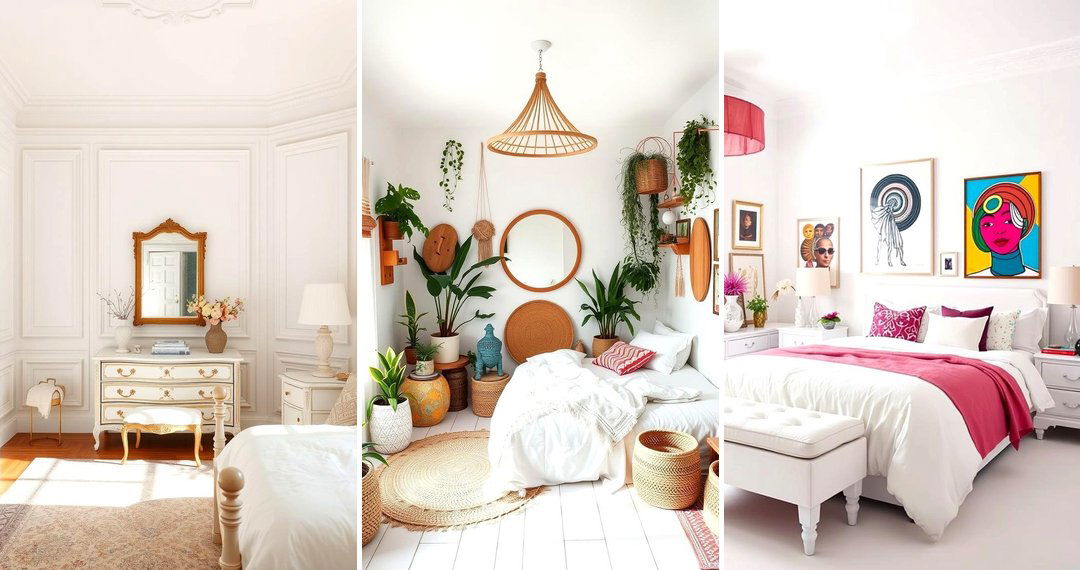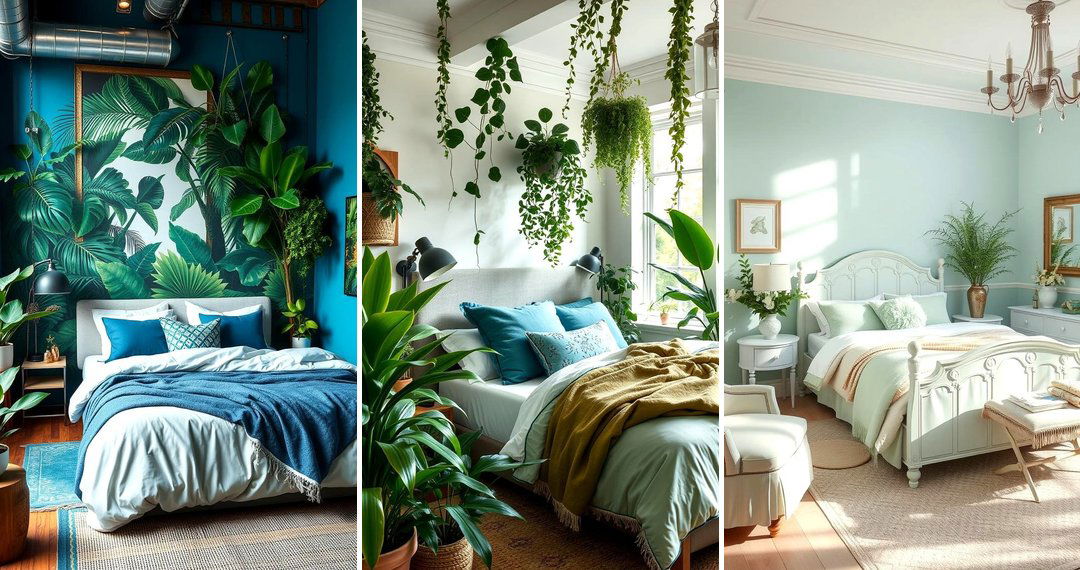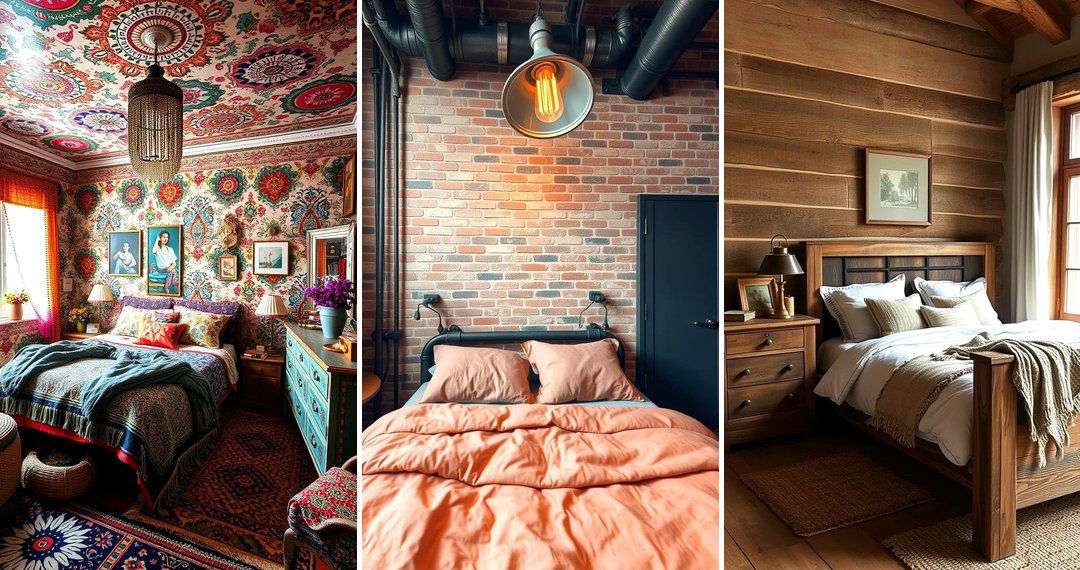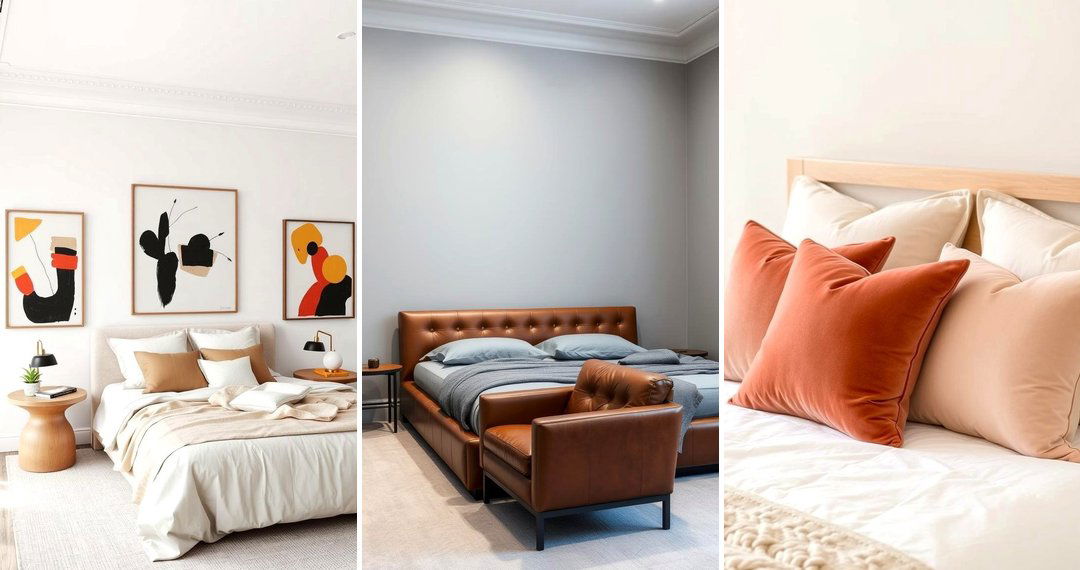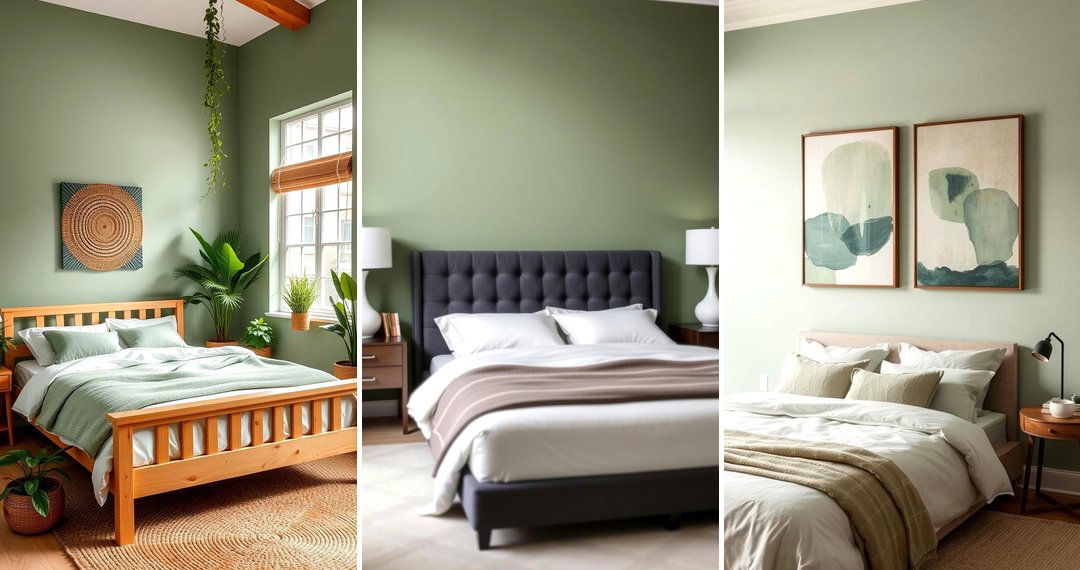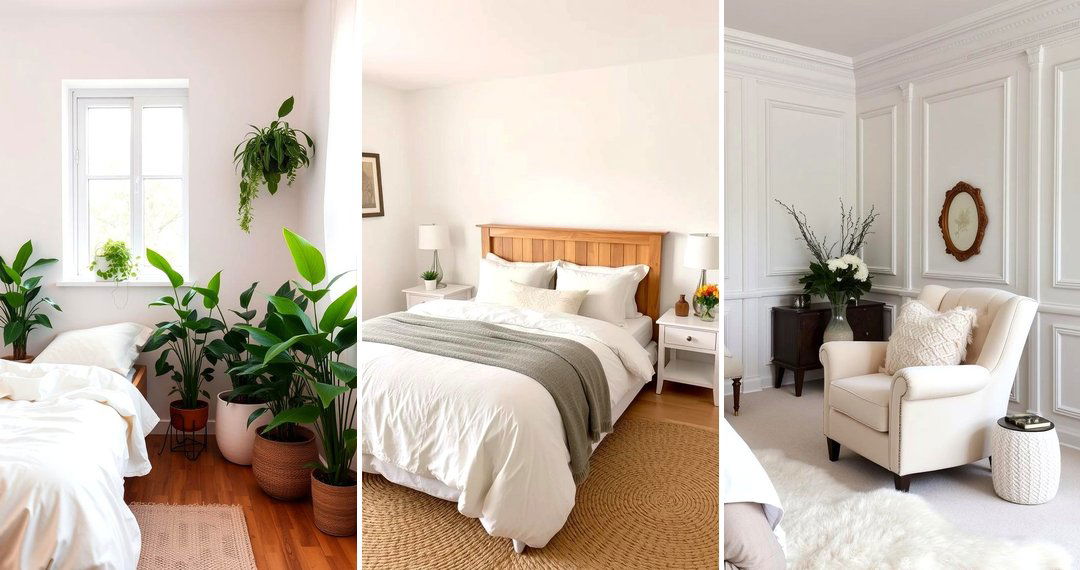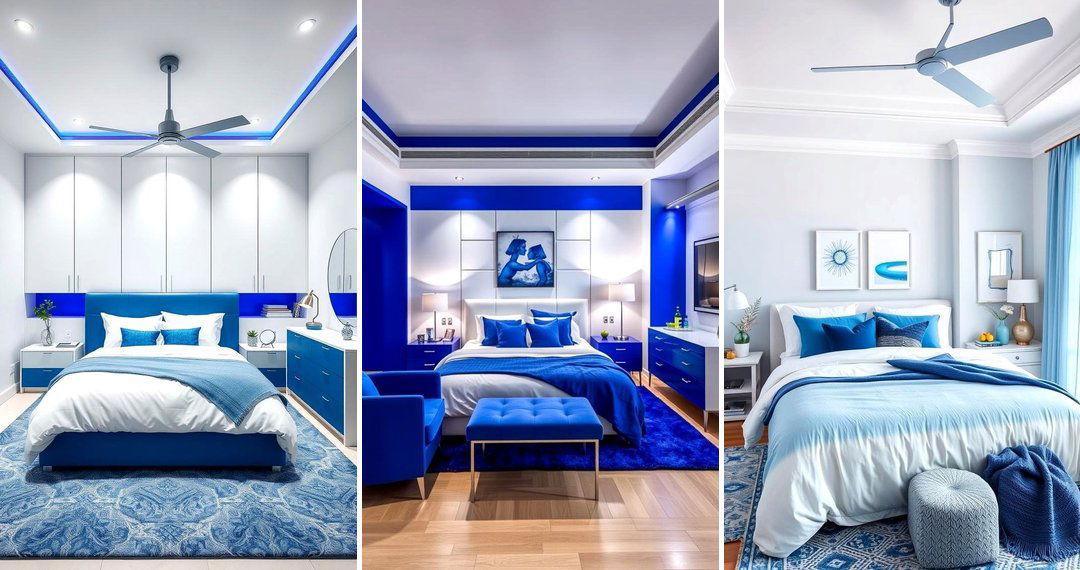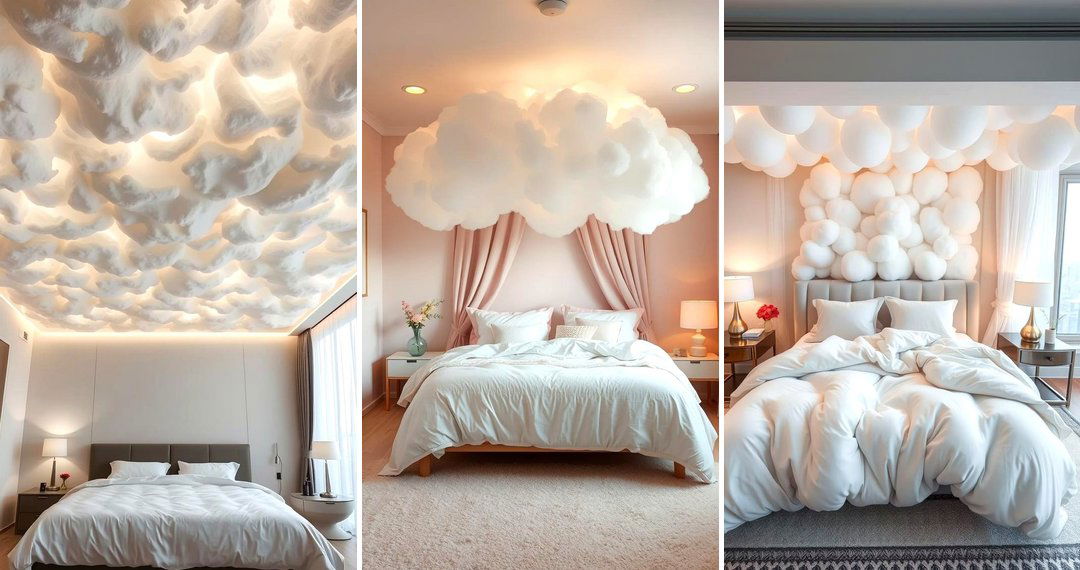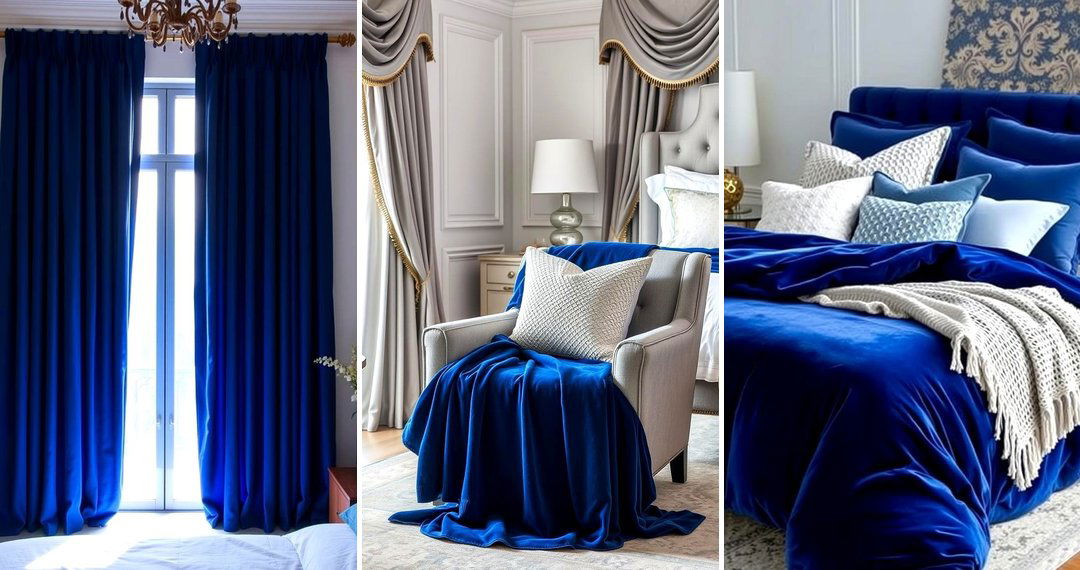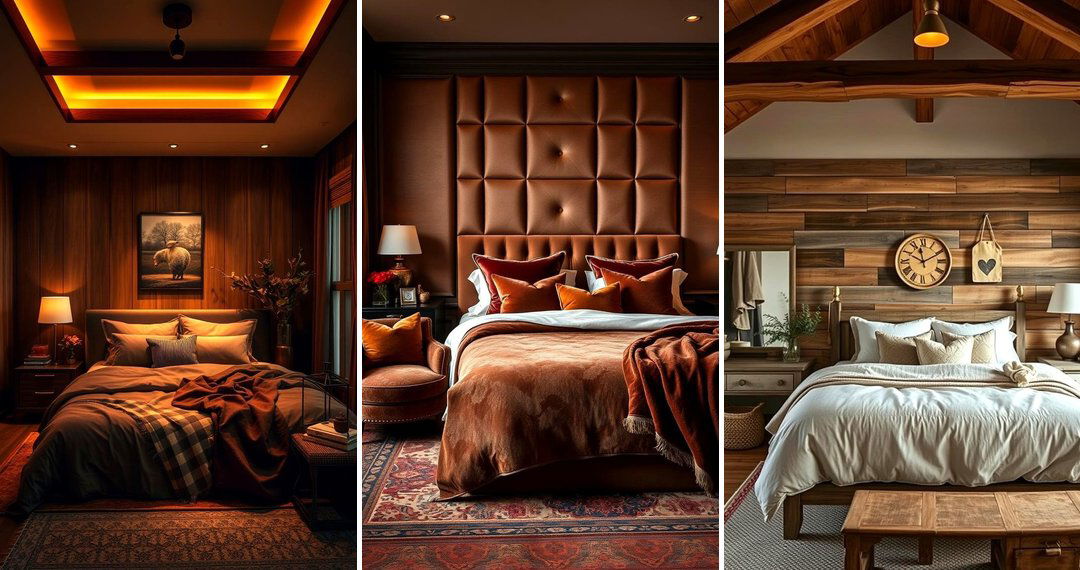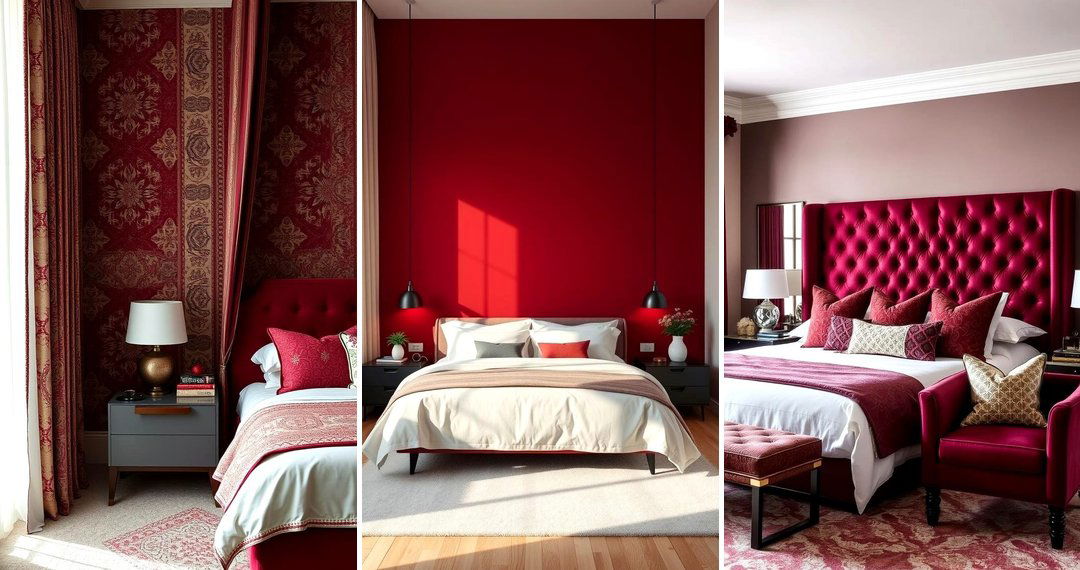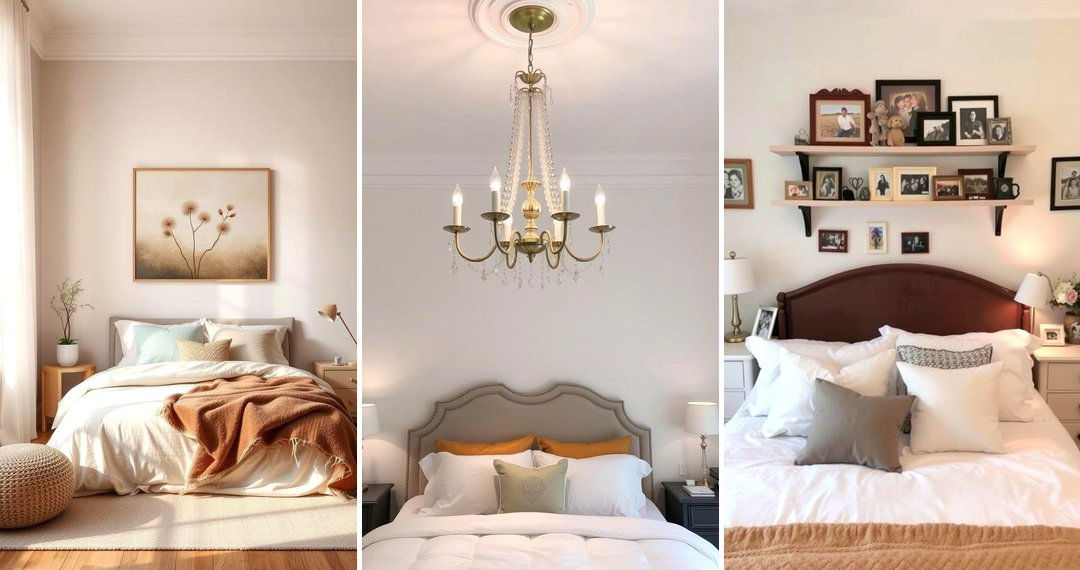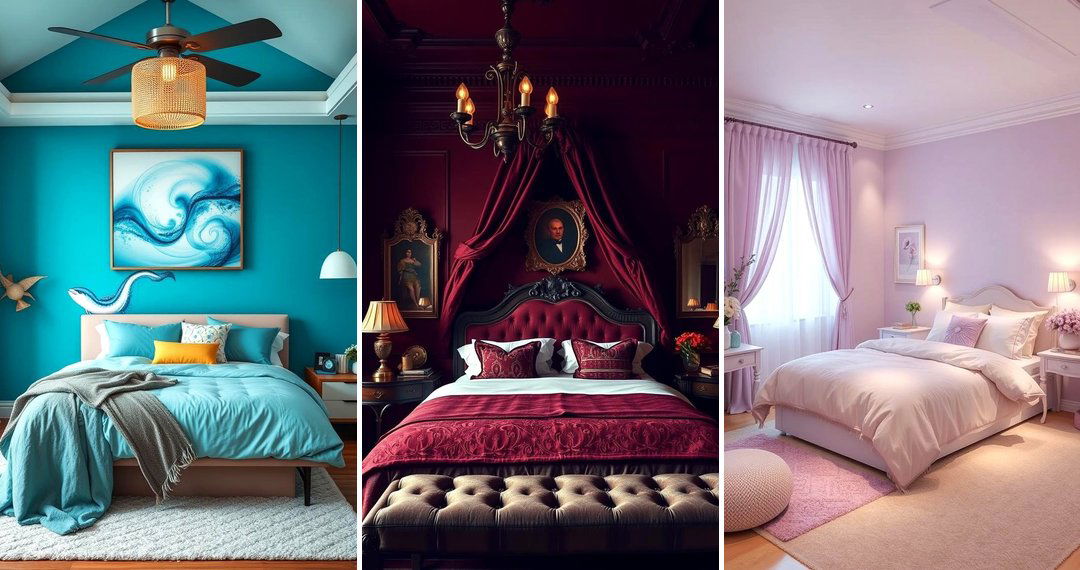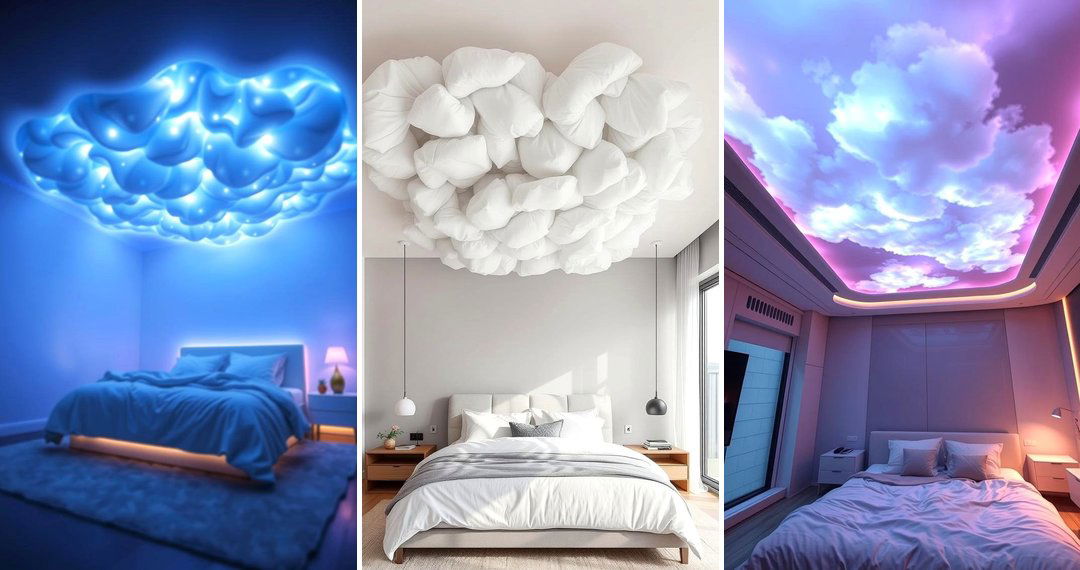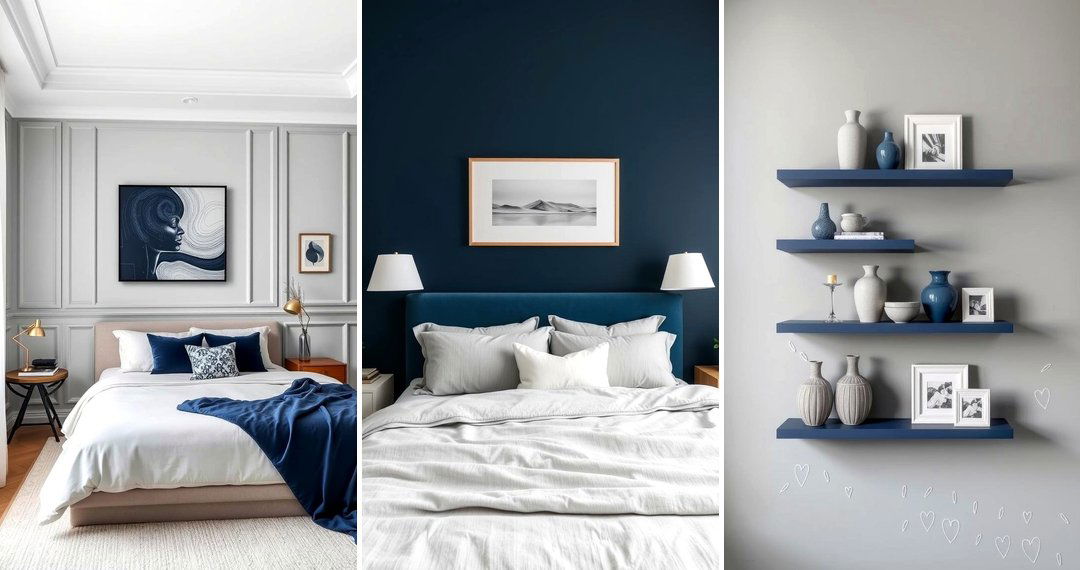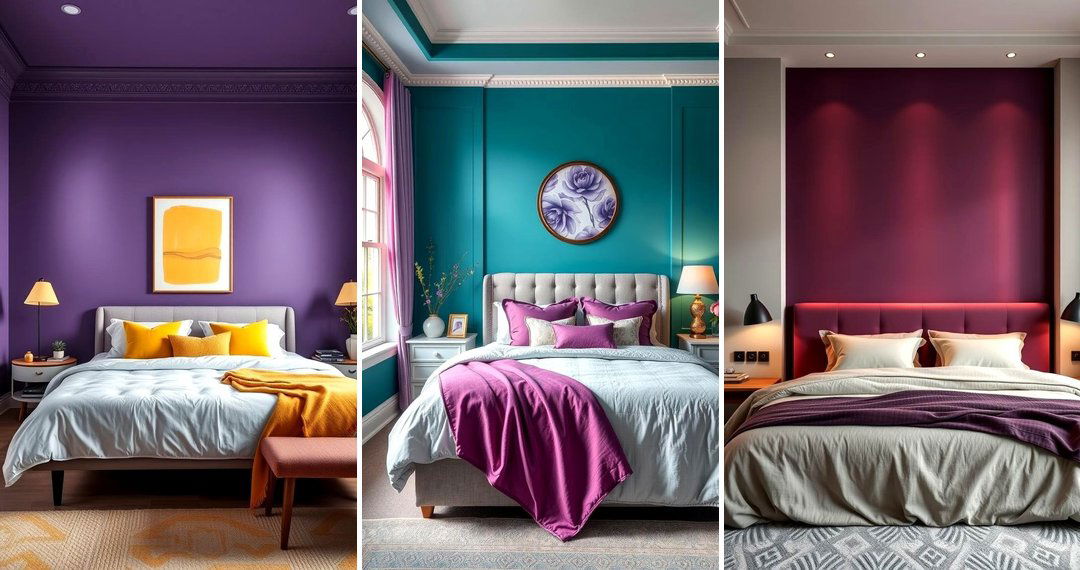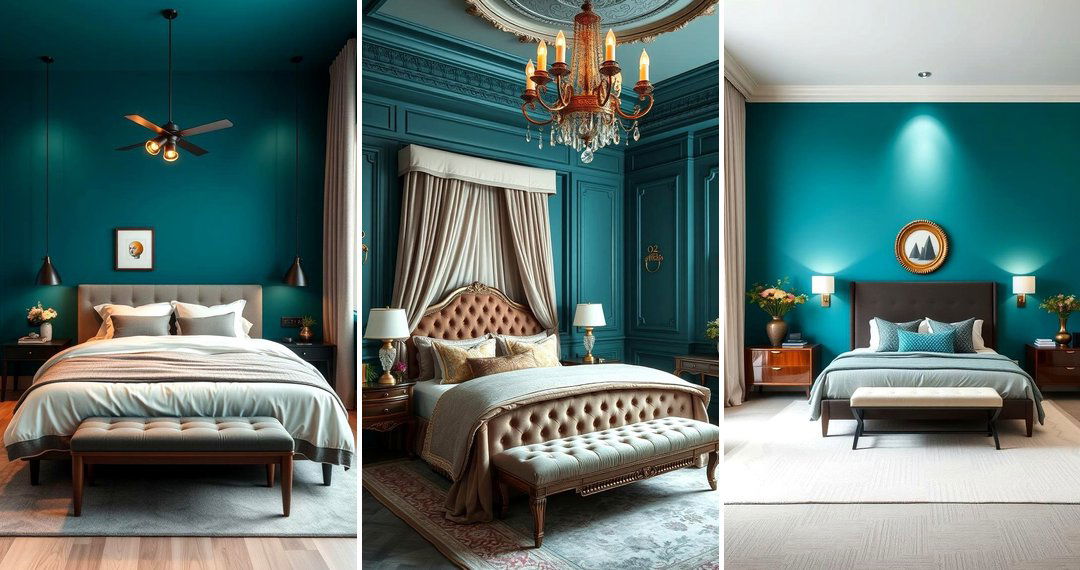Embrace tranquility and cultivate serenity within your personal sanctuary by exploring the principles of Zen bedroom design. The modern world often bombards us with noise and distractions, making the bedroom a crucial haven for rest and rejuvenation. By incorporating elements of simplicity, natural materials, and mindful arrangements, you can transform your sleeping space into an oasis of calm that promotes relaxation and enhances well-being. Discover how thoughtful design choices can contribute to a more peaceful and balanced life, starting with the very place you begin and end each day. Let's delve into a collection of inspiring ideas that will guide you in creating your own Zen bedroom retreat.

1. Embrace Minimalist Furniture
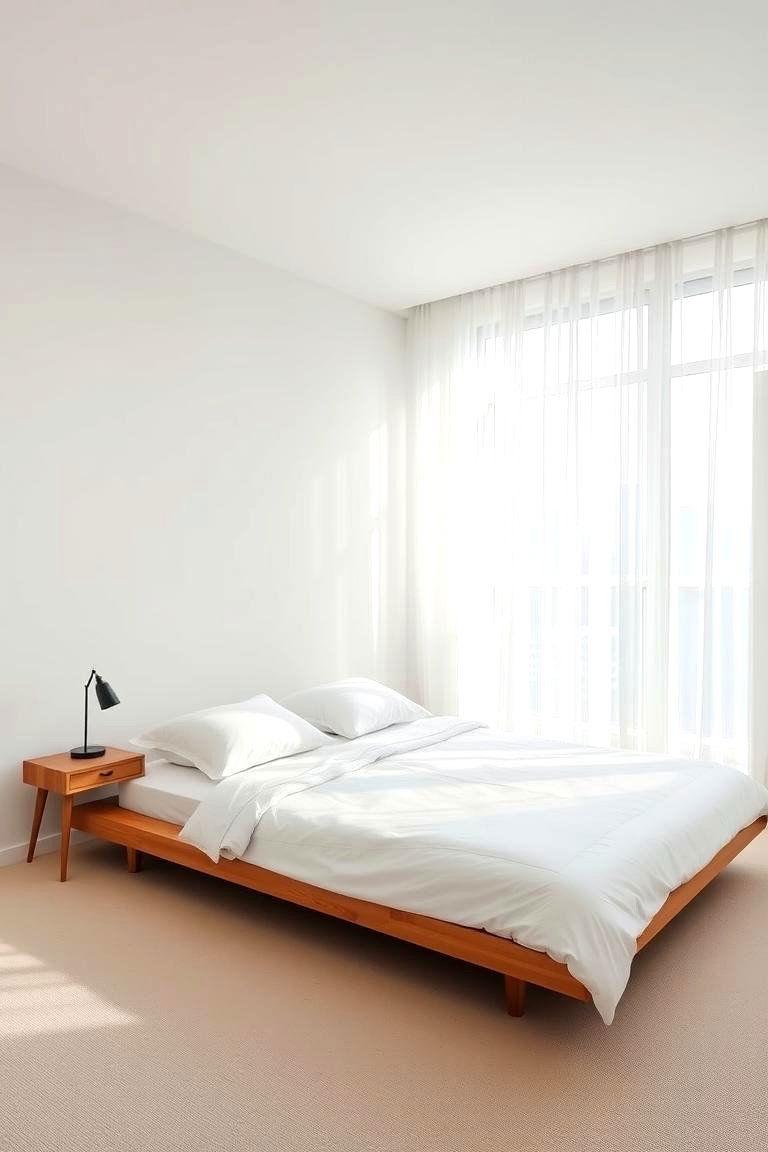
The cornerstone of a Zen bedroom lies in its simplicity, and this begins with the furniture. Opt for pieces that are functional, low to the ground, and free from excessive ornamentation. Consider a platform bed with a simple headboard, a small nightstand with only essential items, and perhaps a low dresser. The key benefit here is the creation of open space, which visually declutters the room and promotes a sense of calm and freedom. By selecting only necessary furniture, you eliminate distractions and allow the mind to relax, fostering a more peaceful environment conducive to restful sleep.
2. Choose a Neutral Color Palette
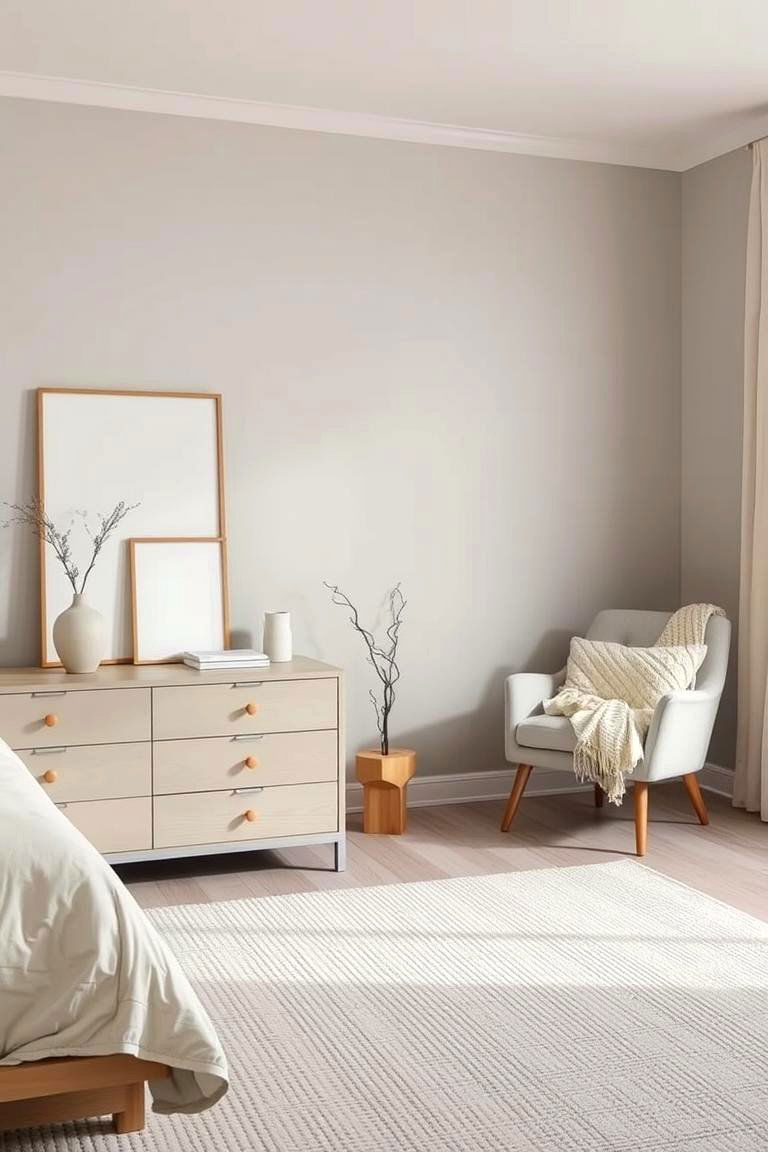
A soothing and harmonious atmosphere is essential for a Zen bedroom, and the color palette plays a crucial role in achieving this. The best approach is to embrace a range of neutral tones, such as soft whites, creams, gentle grays, and earthy beiges. These colors evoke a sense of tranquility and serenity, creating a backdrop that promotes relaxation and mental clarity. Furthermore, a neutral palette offers versatility, allowing you to introduce subtle accents of color through textiles or decorative elements without disrupting the overall sense of calm. This fosters an environment that feels both peaceful and sophisticated.
3. Maximize Natural Light

Natural light has a profound impact on our mood and well-being, making it a vital element in a Zen bedroom. Where possible, design your space to take full advantage of sunlight during the day. Use sheer curtains or blinds that allow light to filter through gently, creating a soft and airy ambiance. The benefits of natural light are numerous, including improved mood, enhanced energy levels, and a connection to the outside world. By maximizing natural light, you create a bedroom that feels bright, open, and inviting, contributing to a more positive and restful experience.
4. Declutter Ruthlessly
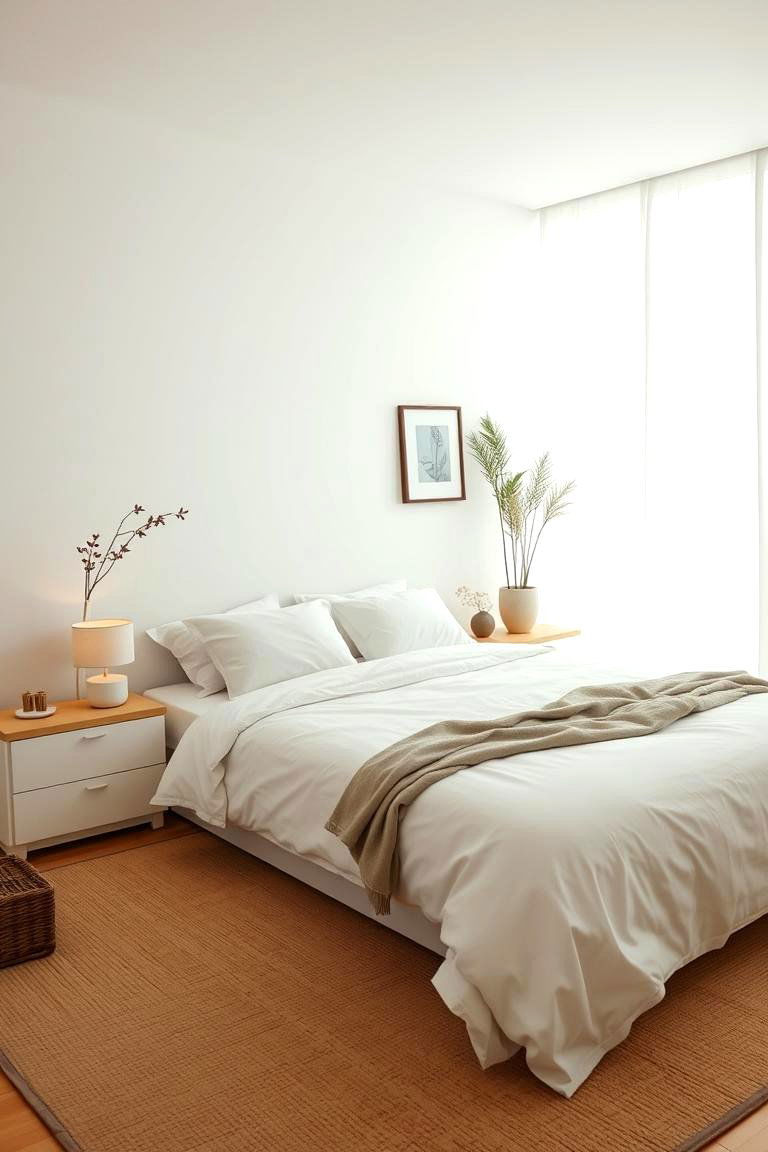
One of the most fundamental principles of Zen design is the absence of clutter. A cluttered environment can lead to a cluttered mind, hindering relaxation and sleep. Therefore, take a mindful approach to decluttering your bedroom, removing anything that doesn't serve a purpose or bring you joy. This includes items on surfaces, overflowing drawers, and unnecessary decorative pieces. The practical advantage of a decluttered space is an immediate sense of calm and order, making the room feel more spacious and peaceful. By creating a clean and organized environment, you support mental clarity and promote a deeper sense of tranquility.
5. Opt for Comfortable Natural Bedding

Your bed is the centerpiece of the bedroom, and in a Zen space, comfort and natural materials are paramount. Choose bedding made from breathable and natural fabrics such as cotton, linen, or bamboo. These materials feel soft against the skin and promote better temperature regulation, leading to a more comfortable night's sleep. Moreover, consider layering your bedding with a lightweight duvet, a cozy throw, and a few simple pillows to create an inviting and restful haven. The benefit of natural bedding is not only enhanced comfort but also a connection to the earth, further promoting a sense of peace.
6. Introduce Indoor Plants

Bringing elements of nature indoors is a key aspect of Zen design, and indoor plants are an excellent way to achieve this. Select plants with calming and air-purifying qualities, such as snake plants, peace lilies, or bamboo palms. These plants not only add a touch of greenery and life to the space but also help to improve air quality, creating a healthier and more refreshing environment. The visual benefit of plants is undeniable, adding a sense of vibrancy and connection to the natural world, which can be incredibly soothing and conducive to relaxation.
7. Incorporate Mindful Decor
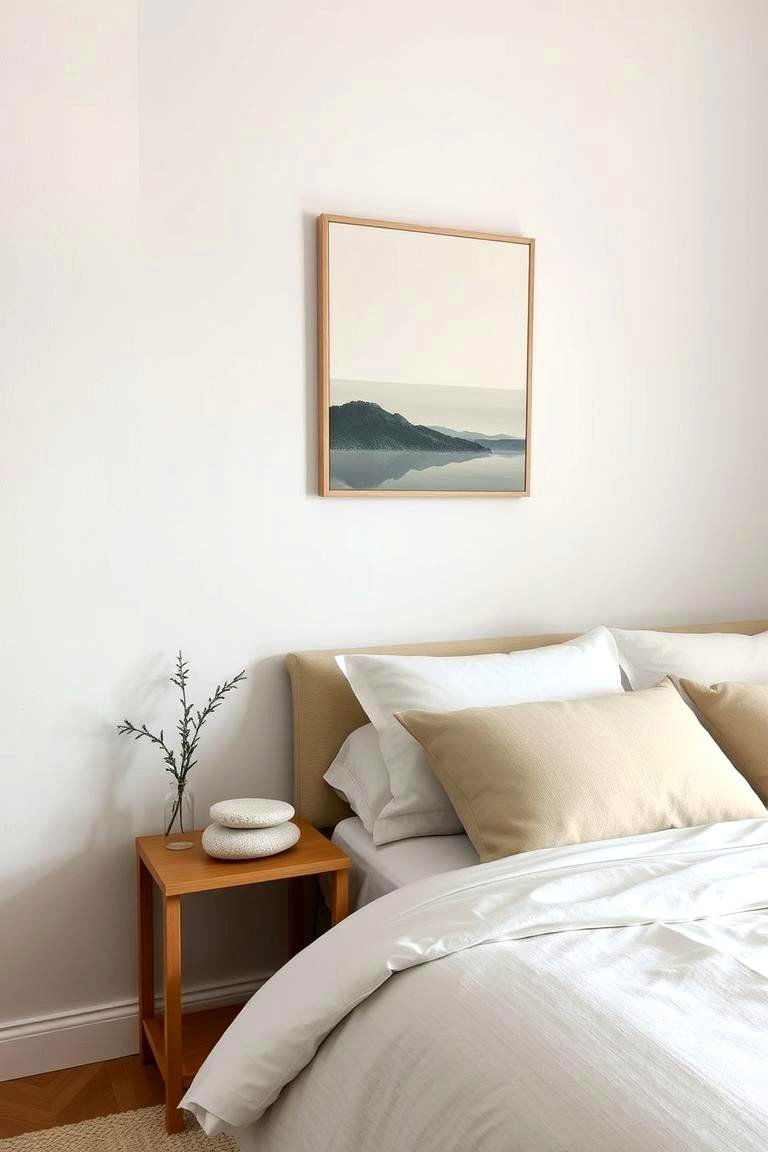
When it comes to decorating a Zen bedroom, the principle of "less is more" should be your guide. Choose a few carefully selected decorative items that hold personal significance or evoke a sense of tranquility. This could be a single piece of calming artwork, a meaningful sculpture, or a collection of smooth stones. The key benefit is to create focal points that are aesthetically pleasing without overwhelming the space. By being intentional with your decor, you maintain a sense of simplicity and allow each item to be appreciated for its individual beauty and contribution to the overall peaceful atmosphere.
8. Utilize an Aromatherapy Diffuser

Engaging the sense of smell can significantly impact mood and relaxation, making an aromatherapy diffuser a valuable addition to a Zen bedroom. Choose essential oils known for their calming properties, such as lavender, chamomile, or sandalwood. The gentle diffusion of these scents can help to reduce stress, promote relaxation, and create a soothing ambiance conducive to sleep. Furthermore, the subtle and natural fragrance adds another layer of sensory comfort to the room, enhancing the overall feeling of peace and well-being.
9. Introduce Nature Sounds

The sounds of nature have a naturally calming effect on the human mind. Consider incorporating a white noise machine or a dedicated nature sounds device that plays gentle sounds like rain, ocean waves, or forest ambiance. These sounds can help to mask distracting noises from outside and create a more peaceful and serene environment for sleep. The benefit of nature sounds is their ability to soothe the nervous system and promote a deeper state of relaxation, making it easier to fall asleep and stay asleep throughout the night.
10. Implement Soft, Adjustable Lighting
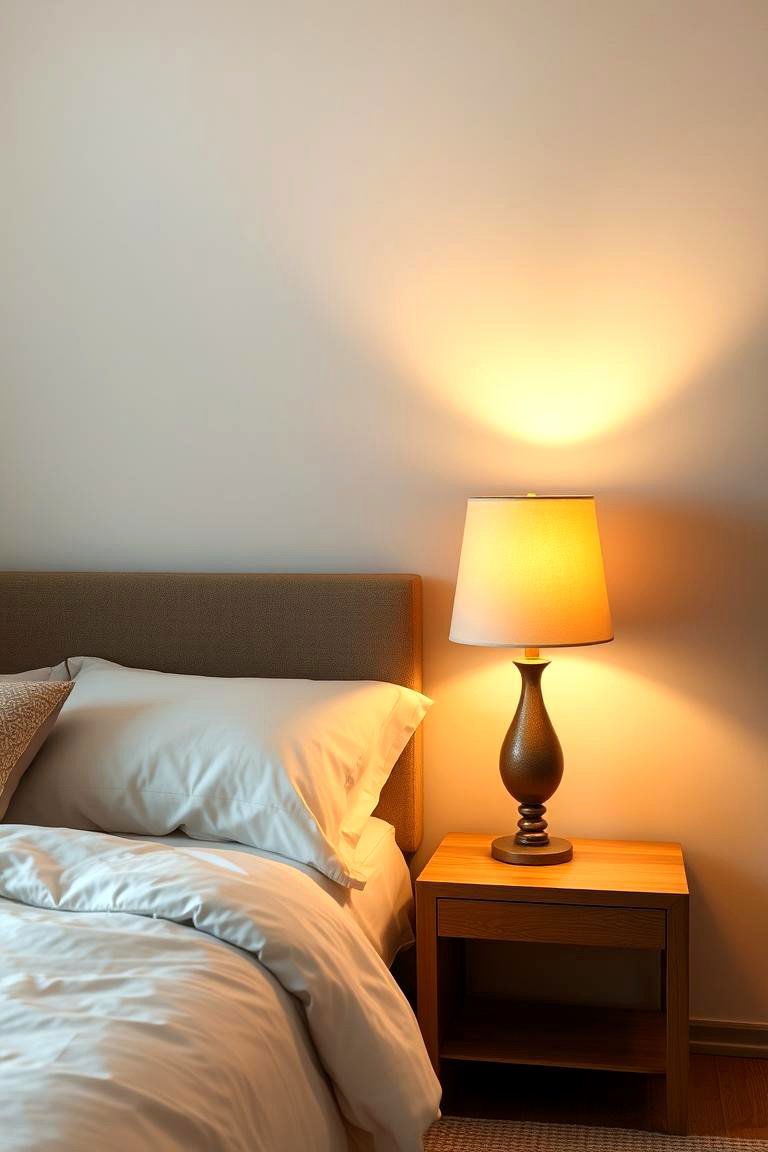
Lighting plays a crucial role in setting the mood of any room, and in a Zen bedroom, soft and adjustable lighting is key. Avoid harsh overhead lights and instead opt for dimmer switches, table lamps, and floor lamps with warm-toned bulbs. This allows you to customize the lighting levels to create a relaxing and inviting atmosphere. The practical advantage of adjustable lighting is its versatility, allowing you to create bright light for reading or getting ready and dim light for winding down before bed, promoting a sense of calm and tranquility.
11. Add Comfortable Rugs
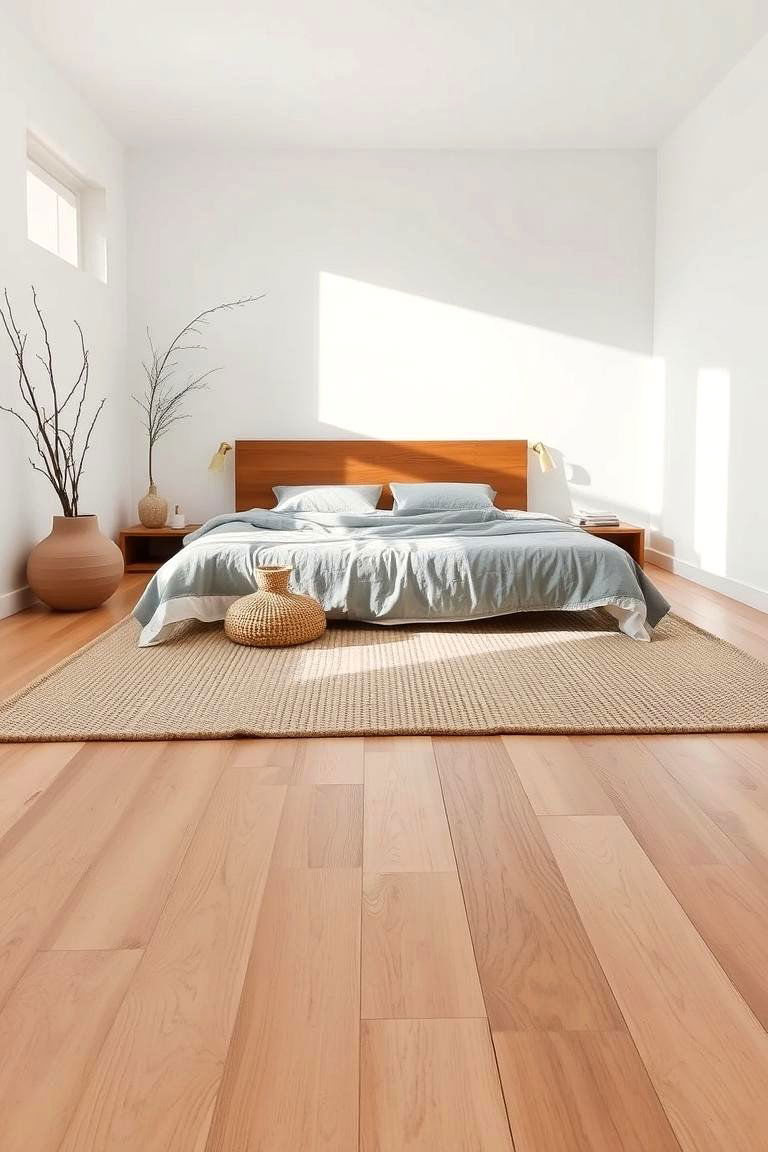
Introducing a soft and comfortable rug underfoot can significantly enhance the feeling of warmth and coziness in a Zen bedroom. Choose rugs made from natural materials like wool or cotton in neutral colors or subtle patterns. The tactile sensation of a plush rug adds a layer of sensory comfort to the space, making it feel more inviting and grounding. Moreover, rugs help to absorb sound, contributing to a quieter and more peaceful environment conducive to relaxation and sleep.
12. Install Blackout Curtains
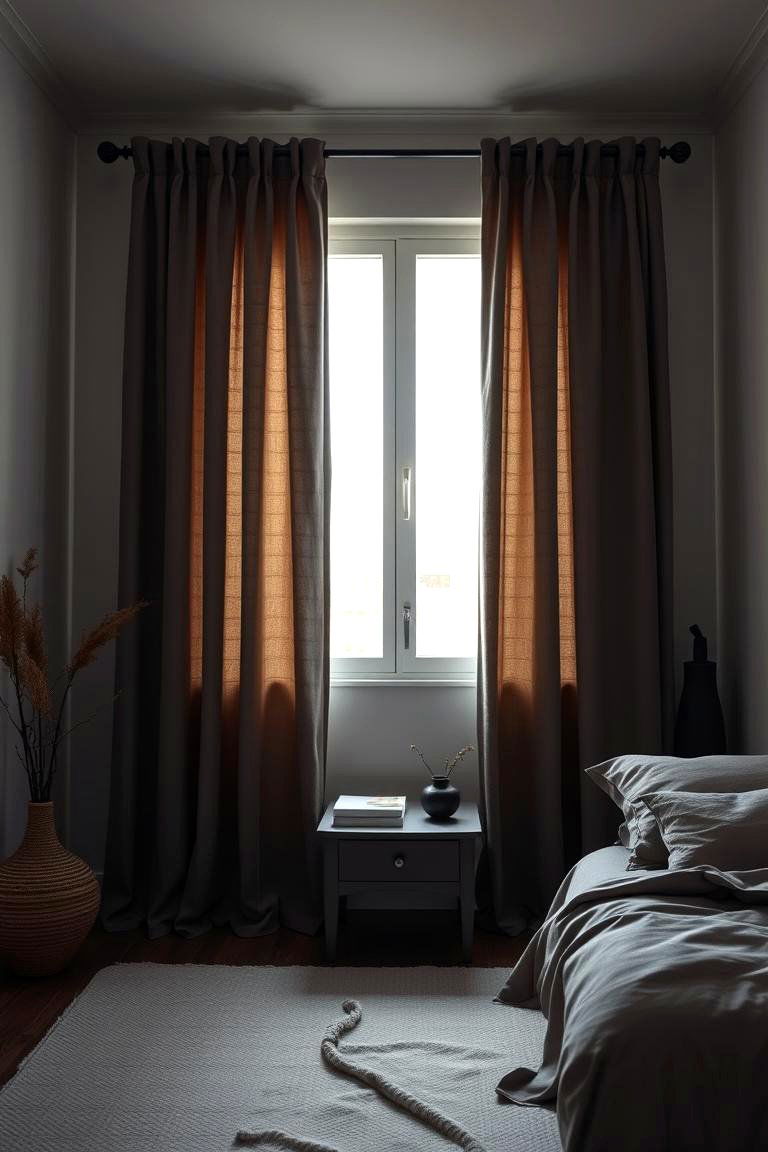
While maximizing natural light during the day is important, the ability to block out light completely at night is equally crucial for quality sleep. Invest in high-quality blackout curtains that effectively prevent external light from entering the room. This creates a dark and conducive environment for melatonin production, the hormone that regulates sleep. The benefit of blackout curtains is improved sleep quality, leading to better rest and overall well-being. They also offer added privacy and can help to insulate the room, further enhancing comfort.
13. Create a Meditation Nook
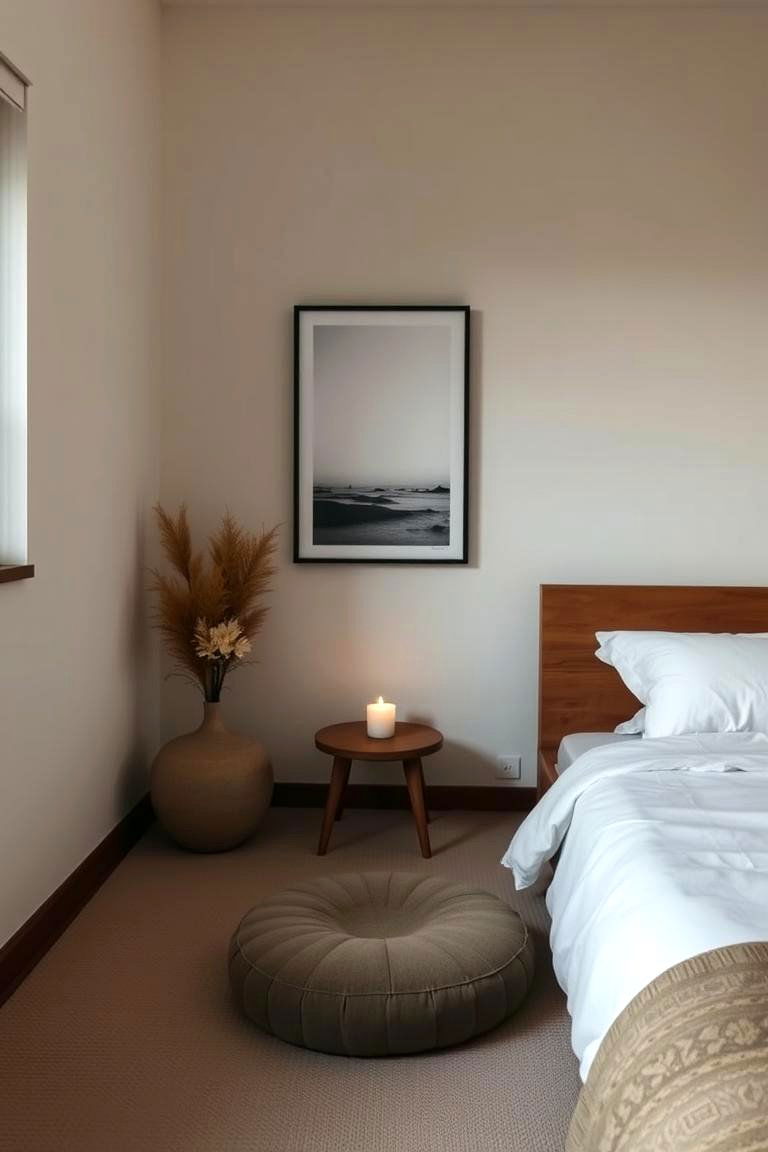
If space allows, consider creating a small meditation nook within your Zen bedroom. This could be a simple corner with a comfortable cushion or floor pillow, a small side table for a candle or incense, and perhaps a piece of calming artwork. Having a dedicated space for mindfulness practices can encourage regular meditation and promote inner peace. The benefit of a meditation nook is the creation of a sanctuary within a sanctuary, providing a dedicated area for reflection and relaxation, further enhancing the Zen atmosphere of the room.
14. Incorporate Natural Wood Accents
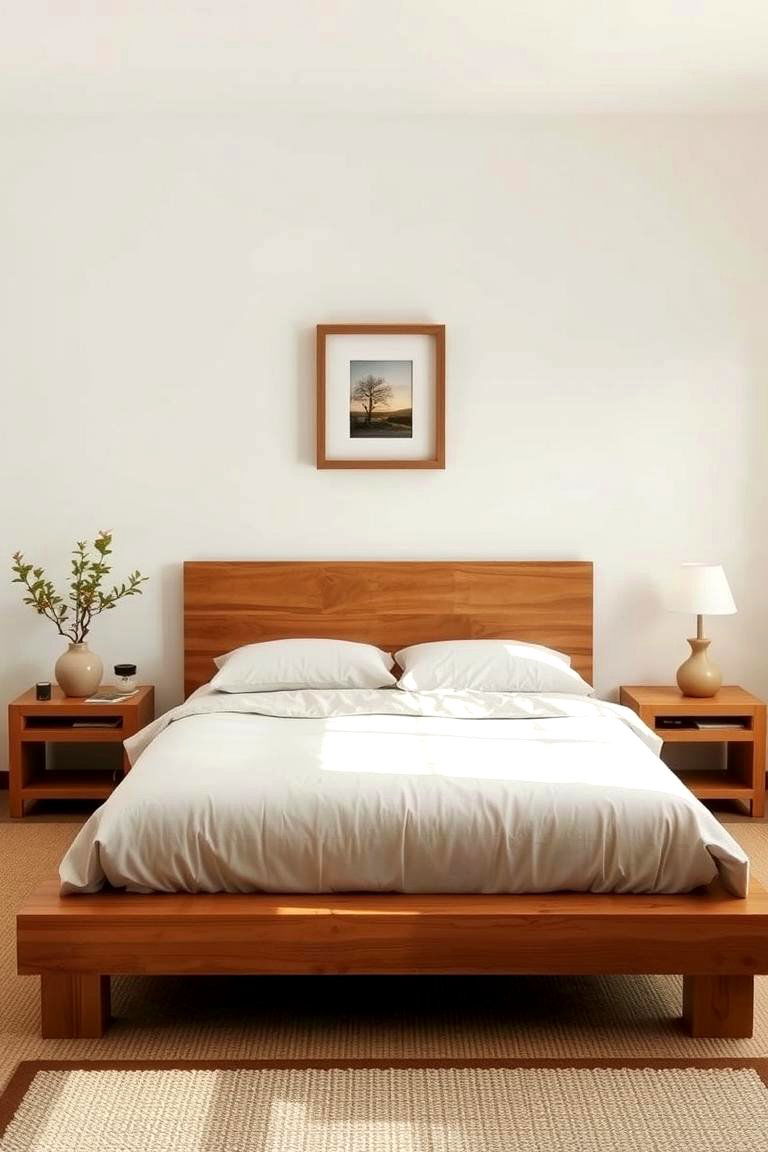
Natural wood elements bring warmth, texture, and a sense of connection to nature into a Zen bedroom. Consider incorporating wood through furniture, picture frames, or decorative objects. The natural grain and texture of wood add visual interest and a tactile element that feels grounding and calming. Furthermore, wood is a sustainable and durable material, aligning with the principles of simplicity and longevity often associated with Zen design. The subtle inclusion of wood accents can significantly enhance the overall feeling of tranquility and harmony in the space.
15. Introduce Stone or Ceramic Elements
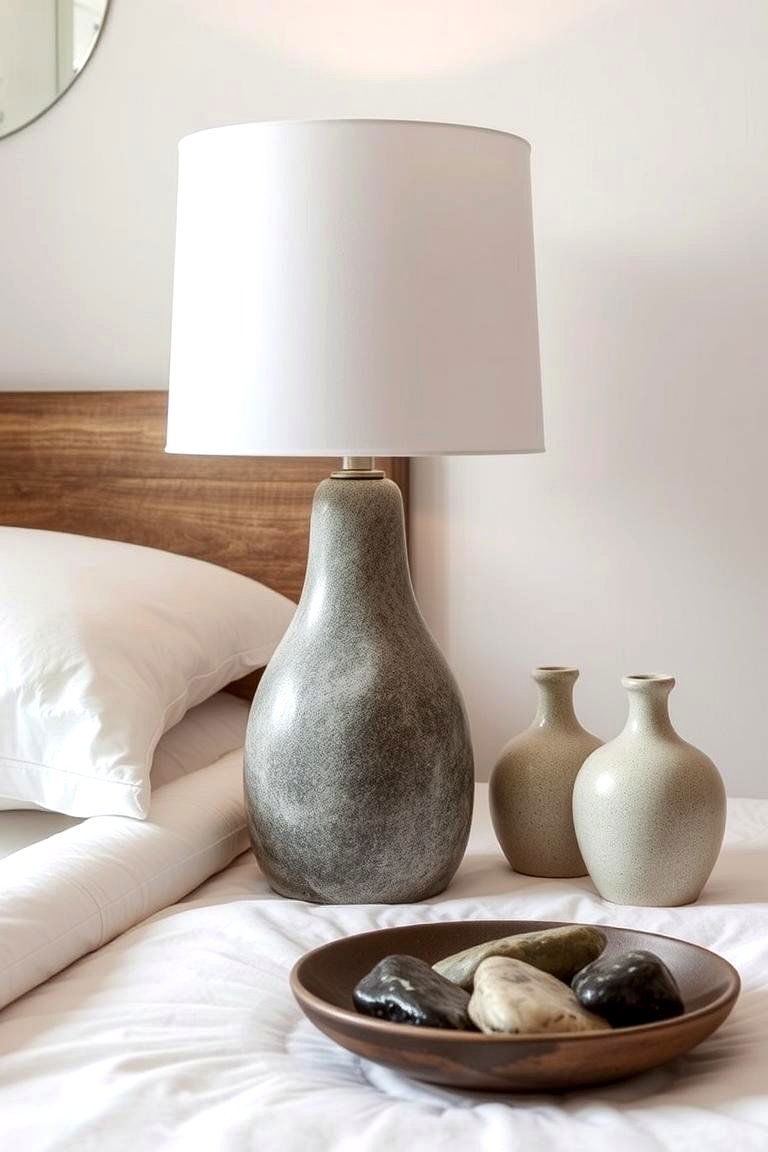
Similar to wood, stone and ceramic elements can add a touch of natural beauty and tranquility to a Zen bedroom. Consider incorporating a stone lamp base, ceramic vases, or even a small dish of smooth stones. These materials have a grounding and calming effect, connecting us to the earth and promoting a sense of stability. The tactile coolness of stone and the smooth finish of ceramic offer sensory experiences that can be incredibly soothing and contribute to the overall peaceful ambiance of the room.
16. Include a Subtle Water Feature
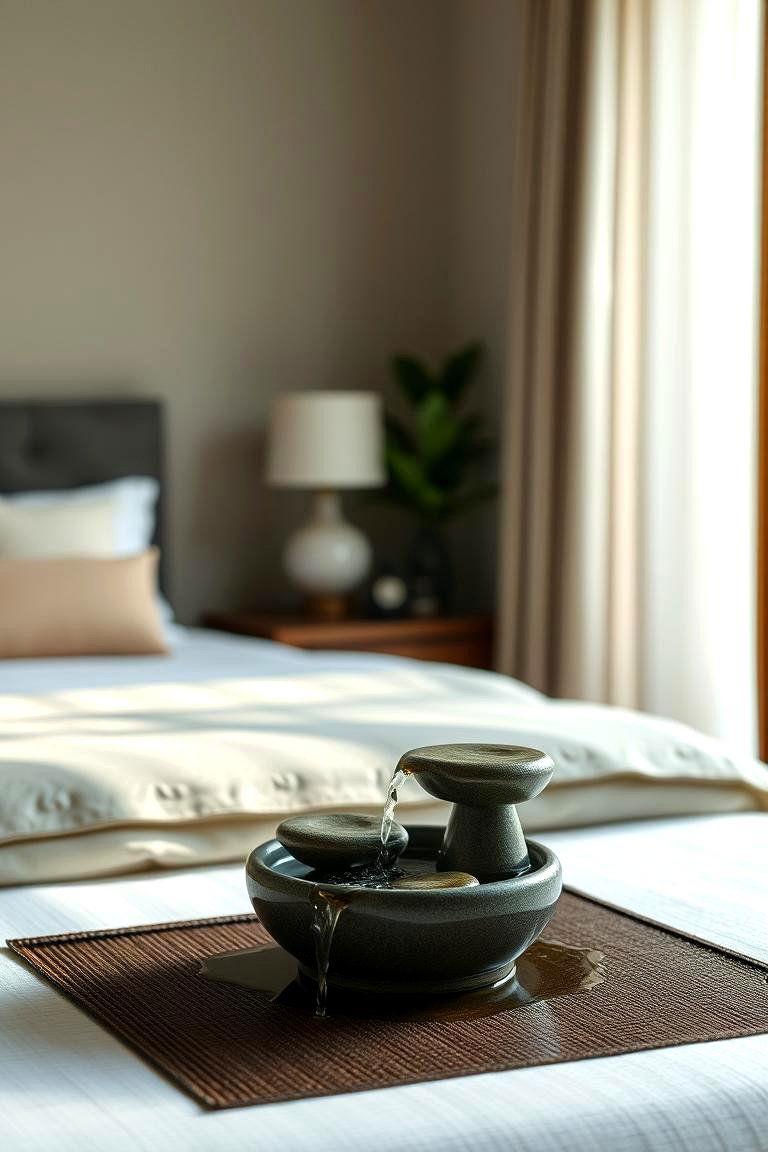
The gentle sound of flowing water is known for its calming and stress-reducing properties. If feasible, consider adding a small indoor water feature to your Zen bedroom, such as a tabletop fountain. The subtle trickling sound can mask other noises and create a peaceful and meditative atmosphere. The visual element of moving water also adds a dynamic yet soothing focal point to the room, further enhancing the sense of tranquility and connection to nature.
17. Integrate a Comfortable Reading Chair
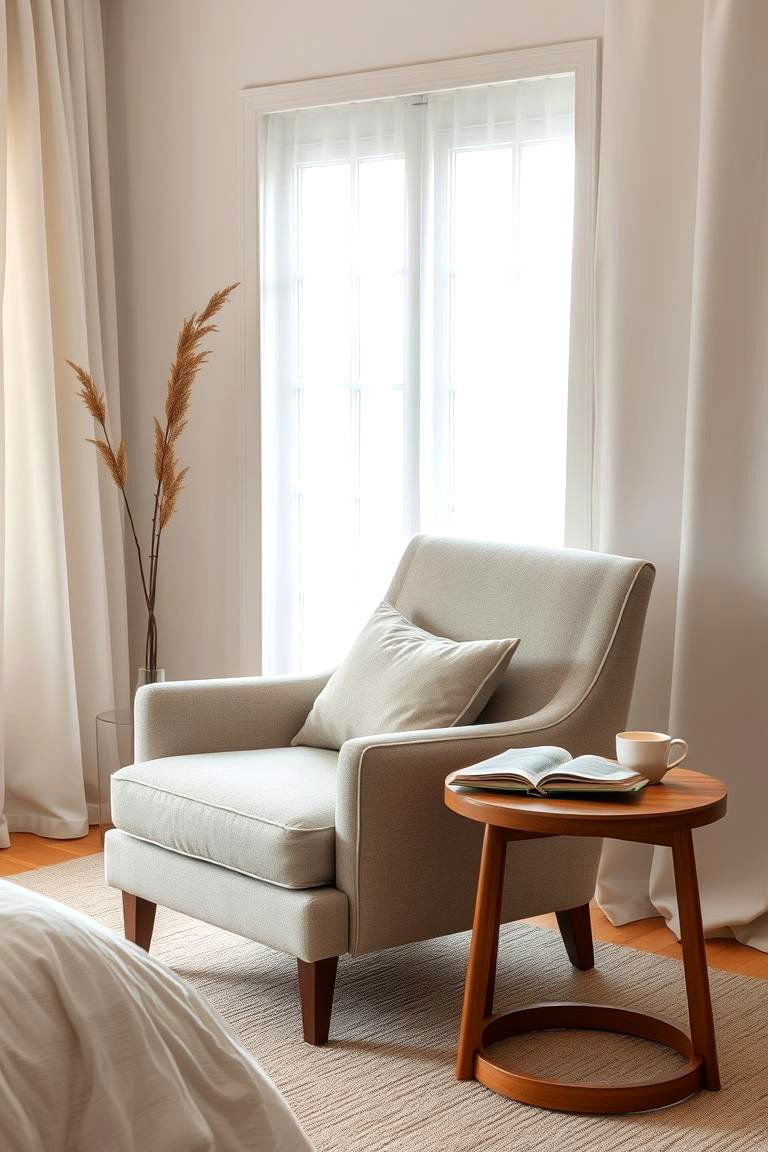
While the bed is for sleeping, having a comfortable reading chair in your Zen bedroom can create a dedicated space for relaxation and unwinding before bed. Choose a chair with soft upholstery in a neutral color and pair it with a small side table and a soft throw. This encourages a slower pace and allows you to engage in calming activities like reading, which can help to prepare your mind for sleep. The benefit of a reading chair is the creation of a cozy and inviting corner that promotes relaxation and mindfulness.
18. Implement Dedicated Storage Solutions

To maintain a clutter-free environment, it's essential to have well-organized and dedicated storage solutions in your Zen bedroom. This could include built-in wardrobes with sliding doors, drawers under the bed, or stylish storage baskets. The key is to have a place for everything so that items are not left out in the open, creating visual clutter. Efficient storage solutions contribute significantly to the overall sense of calm and order in the room, allowing you to relax and unwind in a peaceful environment.
19. Focus on Tactile Textures

Engaging the sense of touch can enhance the feeling of comfort and relaxation in a Zen bedroom. Incorporate a variety of tactile textures through your bedding, throws, pillows, and rugs. Think about materials like soft cotton, cozy wool, smooth linen, and plush velvet. The interplay of different textures adds depth and interest to the space while also providing a comforting sensory experience. This attention to tactile details contributes to a more inviting and soothing atmosphere conducive to rest and rejuvenation.
20. Select Calming Artwork

Artwork can play a significant role in the ambiance of a Zen bedroom. Choose pieces that evoke a sense of calm, peace, and tranquility. This could include abstract art with soothing colors, nature-inspired photography, or minimalist prints. Avoid overly busy or stimulating imagery. The benefit of carefully selected artwork is its ability to create a focal point that promotes relaxation and contemplation, contributing to the overall serene atmosphere of the room.
21. Introduce a Salt Lamp
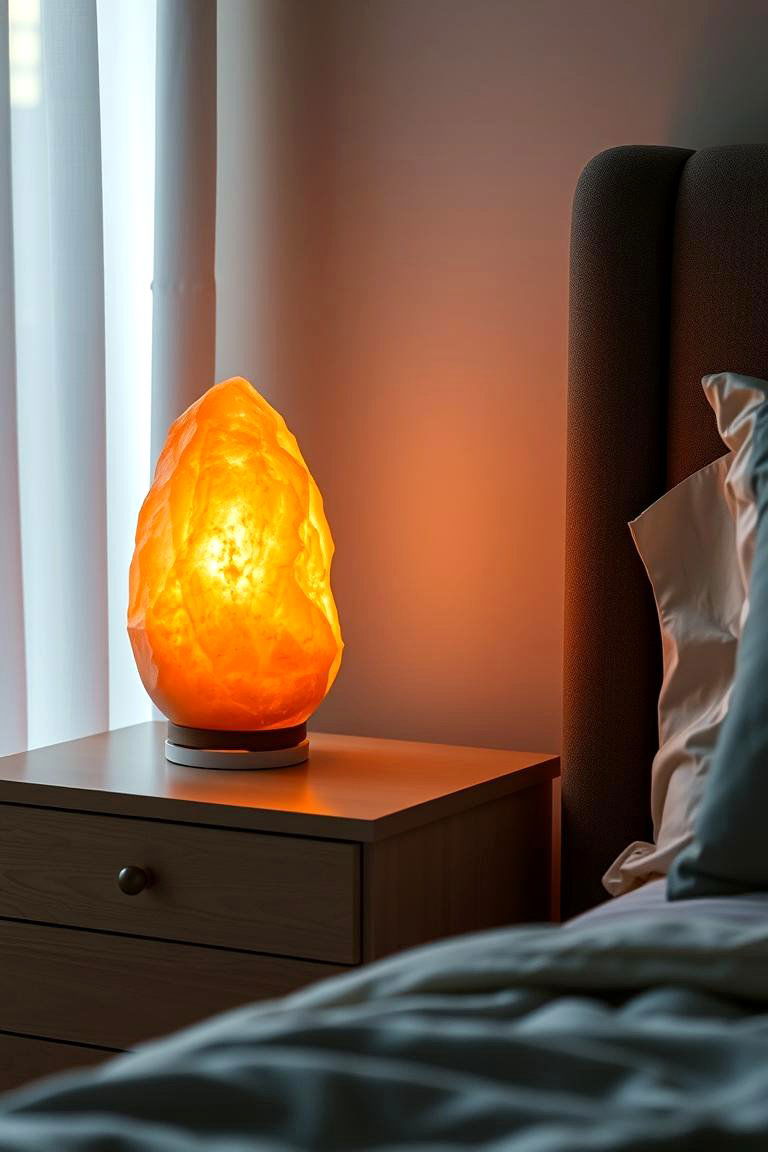
Himalayan salt lamps are believed to have several benefits, including air purification and the creation of a warm and soothing glow. The soft, amber light emitted by a salt lamp can create a relaxing and cozy atmosphere in a Zen bedroom, particularly in the evening. While scientific evidence may vary, many people find the gentle light and the idea of air purification to be conducive to relaxation and sleep. Adding a salt lamp can be a simple yet effective way to enhance the peaceful ambiance of your space.
22. Keep an Essential Oil Roller Nearby

For moments of stress or anxiety, having an essential oil roller with calming scents like lavender or chamomile readily available on your nightstand can be beneficial. The simple act of applying the oil to your pulse points can provide a quick and effective way to promote relaxation and ease tension. This personal touch adds a layer of self-care to your Zen bedroom, encouraging mindfulness and providing a tool for immediate stress relief whenever needed.
23. Consider a Wake-Up Light Alarm Clock
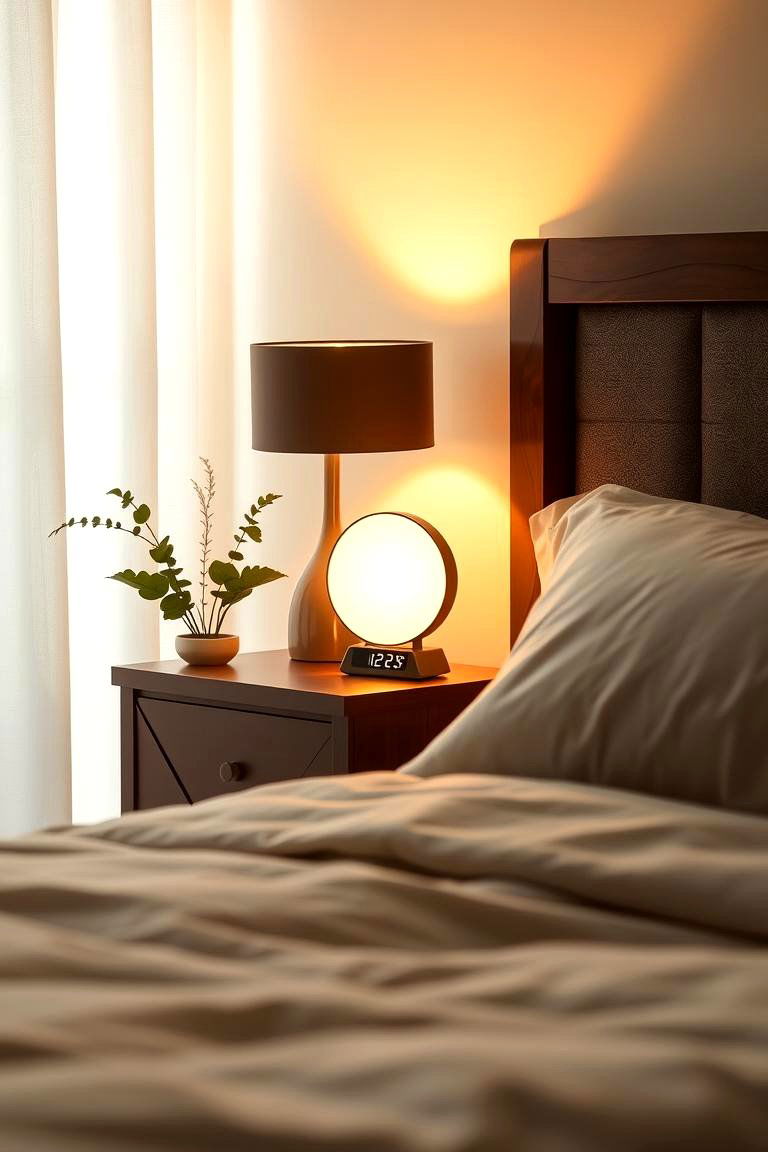
Instead of being jolted awake by a jarring alarm sound, a wake-up light alarm clock gradually increases light in your room in the morning, mimicking a natural sunrise. This gentle way of waking up can help to regulate your body's natural sleep-wake cycle and leave you feeling more refreshed and energized. Integrating a wake-up light into your Zen bedroom routine can contribute to a more peaceful and natural transition from sleep to wakefulness, promoting a more balanced start to your day.
24. Address Potential Noise Issues
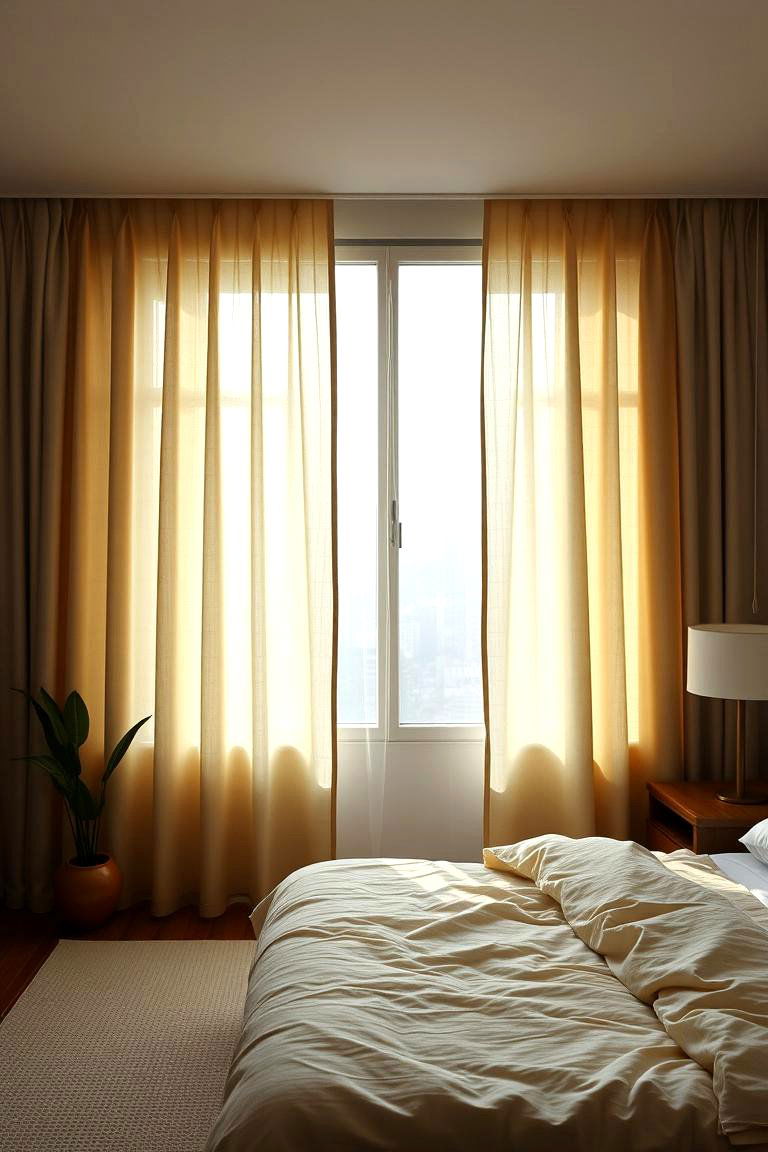
To truly create a Zen sanctuary, it's important to minimize external noise that can disrupt sleep and relaxation. Consider using thick curtains or even soundproofing panels if you live in a noisy environment. Addressing potential noise issues ensures that your bedroom remains a peaceful haven where you can fully unwind and enjoy restful sleep. Creating a quiet and serene atmosphere is fundamental to achieving the tranquility of a Zen bedroom.
Conclusion:
Cultivating a Zen bedroom is an investment in your well-being, transforming your personal space into a haven of peace and tranquility. By thoughtfully incorporating minimalist principles, natural elements, and mindful decor, you can create a sanctuary that promotes relaxation, reduces stress, and enhances the quality of your sleep. Embracing these 24 Zen bedroom ideas offers a pathway to a more serene and balanced life, starting with the most intimate room in your home.


